SUMMARY
This is AI generated summarization, which may have errors. For context, always refer to the full article.
There are certain images that come to mind when someone mentions Philippine prisons. One may think of the photos of the men in the New Bilibid Prison sleeping too closely for comfort, or the fact that political personalities don’t often stay detained for long.
Filipina prisoners, however, are not in the same situation as their male counterparts, experts say. This is because female prisoners require special attention for their gendered needs.
For instance, activist Reina Mae Nasino’s story rings a painful memory for advocates: she was a mother whom authorities separated from her child at birth. By the time she saw her baby River again, the infant had died from a bacterial infection.
According to lawyer Kristina Conti, Nasino’s case shows a violation of the Bangkok Rules, a 2010 United Nations resolution on the rights of women prisoners. It holds that decisions to allow children to stay with their mothers in prison should be based on the best interest of the child.
Here are other things to know about women in conflict with the law (WICL) in the Philippines:
In numbers
While WICLs are placed in jails across the country, the largest women’s prison is the Correctional Institution for Women (CIW) in Mandaluyong City. It has a capacity of 1,500, but its population as of March 1, 2021, is 3,364, according to Superintendent Virginia Mangawit.
125%
Congestion rate in CIW, as of March 1, 2021
Majority of the crimes the women at CIW were accused of are drug-related, at 63.64%. This is followed by crimes against property, like robbery and shoplifting (19%), and crimes against persons, like murder and assault (13%).
Most of the women in CIW are aged 40 to 59, at 1,798, followed by younger women aged 22 to 39, at 1,021.
Overall, detention centers for females in the Philippines are more crowded than male detention centers, according to criminal justice expert Raymund Narag. Most jailed women are mothers, he said in a webinar organized by University of the Philippines Institute of Human Rights (UP IHR).
Human Rights Watch reported in 2020 that the Philippines has the most congested penal system in the world. As of January 2021, the Bureau of Corrections reported a total congestion rate of 301%, which means the 7 Bureau of Corrections facilities are holding 4 times more inmates than their total capacity can handle.
Social challenges
Women have special vulnerabilities when they are detained. Although women can commit crimes the same way men do, gender roles and power perceptions come into play in the crimes’ circumstances, Conti said in the UP IHR webinar.
When it comes to drug cases, women have minor, yet established, roles.
“You can rarely see women as masterminds of drug-related crimes. Generally, they would just be accused of use, possession, sometimes participating in a buy-bust, but very rarely they are the ones who are the subject of the buy-bust,” said Conti.
In Rappler’s investigation into 557 killings in Bulacan in the first 17 months of Rodrigo Duterte’s presidency, just 62 of the victims were female, and only 31 of their cases were drug-related.
Women also face sexual harassment and violence upon arrest and during detention. In July 2020, the Philippine National Police said two teenage girls were sexually harassed by two cops, Staff Sergeant Randy Ramos and Staff Sergeant Marawi Torda, after they were arrested for violating curfew in Ilocos Sur.
One of the girls, 15, was shot dead after filing a molestation complaint against Torda. The other girl who survived, 18, lodged a rape complaint against Ramos. The cops were accused of being involved in the 15-year-old’s murder.
Health and family challenges
There is no uniform maternal care system across penal institutions, according to lawyer and doctor Lee Edson Yarcia. The availability of breastfeeding facilities and reproductive health services depends on the respective jail warden’s resources.
The Department of Health has named pregnant women as one of the most vulnerable to the novel coronavirus. Yarcia, in the UP IHR webinar, told the story of Grace (not her real name), who was pregnant in an unnamed prison.
In Grace’s experience, physical distancing was impossible, clean drinking water was sold for P1 per cup, and face masks were only available for the elderly and pregnant women like herself. When she gave birth, she was reportedly only given two days to nurse the baby.
The non-separation of a mother and her newborn child is not just a matter of emotional fulfillment, but it is standard medical care. Exclusive breastfeeding for the first six months is best for an infant’s health, according to the World Health Organization.
The country also lacks facilities for female children in conflict with the law, according to Maricel Deloria, the Department of Social Welfare and Development’s (DSWD) assistant bureau director for programs.
Post-detention
The challenges for women do not stop when they are freed from detention. According to human rights lawyer Catherine Alvarez, women face stigma when they have been charged with a crime, on top of existing layers of discrimination.
“Mayroong pagtingin ng society na hindi ka dapat maging nanay kasi nag-commit ka ng crime,” said Alvarez in the UP IHR webinar. (There is a perspective in society that a woman is not fit to become a mother because she committed a crime.)
The DSWD said, since most of the incarcerated women in the country are in their productive years, they lose much of the quality time they could have given as a parent by the time they come back to their families.
“While we understand na ’yung mga lalaki, tatay, ay may kakayahang magbigay ng gabay, alam natin ang emotional attachment ng nanay habang lumalaki [ang mga anak nila]. Ito ay naobserbahan namin,” said Deloria. (While we understand that the men, the fathers, also have the ability to guide their children, mothers have an emotional attachment to their children as they grow up. We have observed this.) – with a report from Michael Bueza/Rappler.com
Add a comment
How does this make you feel?
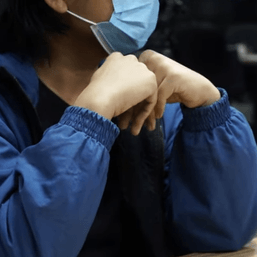

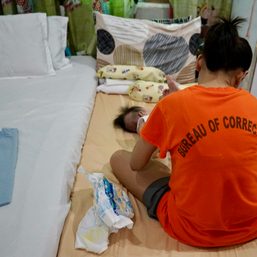
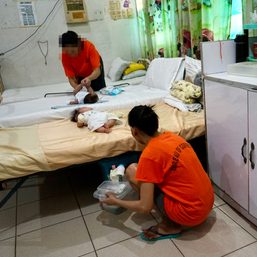
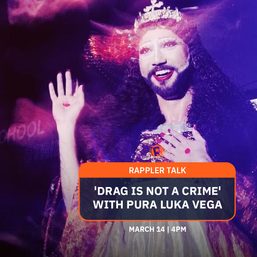
![[Dash of SAS] Making abortion a constitutional right](https://www.rappler.com/tachyon/2024/03/Its_true_-_Flickr_-_Josh_Parrish-1.jpg?resize=257%2C257&crop=125px%2C0px%2C768px%2C768px)
![[WATCH] Spoil me but respect me: A sugar baby’s story](https://www.rappler.com/tachyon/2024/03/titlecard-03.jpg?resize=257%2C257&crop_strategy=attention)
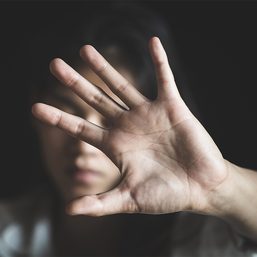
There are no comments yet. Add your comment to start the conversation.